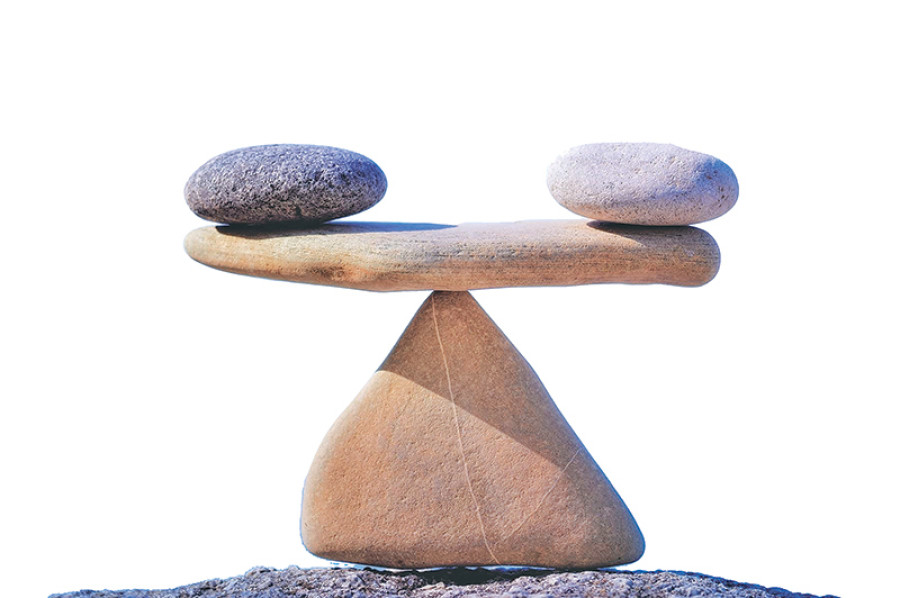Miscellaneous
To catch a breath
The virtue of mastering one’s own mind has often been touted as being crucial to a satisfactory and productive life.
Dr Bikalpa Paudel
The virtue of mastering one’s own mind has often been touted as being crucial to a satisfactory and productive life. For many, this has entailed some form of meditation or other, seeking a more “balanced” outlook towards life—an existence less affected by what one’s mind perceives as giddying highs or gruelling lows, against the backdrop of an impartial reality. Today, with the onslaught of the internet, cellphones, social media updates and constant notifications, the fluctuations in one’s experience seem even more amplified. While all these stimuli eat away at our ever shrinking attention span and feed into our endless thirst for instant gratification, one cannot help but question if our mind is really prepared to handle all this. And if so, at what cost? Such thoughts eventually drove me to enrolling into a 10-day meditation retreat in the outskirts of Kathmandu Valley.
Having been brought up and educated with a science background—where rationale reigned supreme—I, admittedly, had my fair share of apprehensions before joining the programme. Would they insist on persistently alluding to concepts that I personally relegated to the category of vague metaphorical constructs at best (the soul?) and outright falsehoods at worst (sentient deities?)—some previous experience with meditation, from other sources, had my expectations coloured. While I was fully committed and kept an open mind, I only wanted some quiet for a few days and hoped that they would just train us in some good old meditation techniques. That would be the beginning and the end of the amount of dogma I was willing to tolerate. As I later found out, I would not be disappointed.
The practice in itself—called Vipassana—is quite popular in Kathmandu. Touted as being derived from actual teaching of Siddhartha Gautama, the term literally translates into “to see things as they are.” Reintroduced to the world in the late 20th century by SN Goenka, a man who took to the practice to escape debilitating migraines, is all about remaining focused on your breath and bodily sensations. Whatever sensation manifests within any body part is that moment’s reality, to be accepted as it is. The key is to neither crave any seemingly pleasant sensation, nor be averse to an unpleasant one—the buzzword for this being “equanimity”. Observing one’s own sensations, Vipassana meditation seeks to break, or at least put a damper on one’s old habit pattern of knee-jerk reaction to stimuli. This observation is not just limited to physical sensations but also emotional, for they too create a corresponding feeling within the reality of one’s body.
Attentive to sensations from all over the body, we gradually tune the mind to pick up on what it generally leaves out. Midway through the course, with longer spans of focus, I discover more than a dozen pulsations on my face that I never knew existed! Towards the end, I began feeling buzzing vibrations along the arterial pulsations on my hands and feet—it’s weird to feel your arteries pulsing from the inside. It’s amazing, temporary as it may be, to not be bothered by excruciating pain somewhere in your body as you focus elsewhere. The power of the mind—the cause and the cure of all suffering lay herein, and I felt like I was beginning to understand, be it for only a few moments here and there.
The course also required one to observe strict silence for its duration, which means no talking. Practically it’s as if you’re there all by yourself, which is entirely in the interests of the meditator—to help reduce unnecessary thoughts and prevent colouring one’s expectations by someone else’s opinion. The assumption is that as with all things subjective, this experience too, is unique for everyone and beyond comparison.
Many seemed to struggle with the requirements. For some, a gruelling schedule that did not include dinner might have been challenging. For others, observing strict silence might have been an ordeal. For almost everyone the leg or back pain was an issue, but for some it was a no-go. A couple of people left the course within the first few days, while the rest of us strengthened our resolve. Some also struggled with certain hypothetical constructs that detracted them from the practice, based on discussion sessions after the silence ended for the day. I just paid cursory ear service and nothing else. Many beliefs central to Buddhism, such as reincarnation were and are unacceptable to me, but I reminded myself to not let such inconveniences mar my meditative experience. I was indeed very glad that the practice didn’t explicitly require that I believe in the ideology.
Being acutely aware of medical practice here in Nepal, where adequate counselling, therapy and meditation are seldom, if ever, integrated to manage illnesses and the focus lies very much on whatever seems a quicker fix, which mostly leads to more and more drugs; I was curious about trends in the other countries. I would later find out that even though many still saw more spirituality than medicine in mediation, it was beginning to find its niche in healthcare systems plagued by over-diagnosis and over-prescription. Meditation, coupled with exercise, is already being prescribed to many battling depression or anxiety.
Upon discovering that I came from the medical fraternity, a fellow meditator at the centre confided in me about his mental health and substance abuse issues, seeking my counsel. Congratulating him for having chosen this constructive outlet, I encouraged him to continue based on the positive results he’d experienced himself, reiterating that this, however, shouldn’t be at the expense of his prescriptions—meditation, in most cases, could be a part of holistic medical practice, but more standardisation and definitive comparative studies would be necessary before one could confidently prescribe it as a replacement care approach for many ailments.
The 10-day course done, returning back to “normal life” took some re-adjusting and it could be a while before I can report any lasting positive changes. I personally feel that I’ve become a bit more mindful of my thoughts and sensations. Regardless, it’s pertinent to acknowledge that any benefits realised then could as easily wane away if the practice isn’t continued in some form—after all, we are a function of our habits.
While the practice of Vipassana came closest to what I had in mind for an ideal meditative practice, and I will probably do it again, I cannot help but think that could be developed further and taken to more people, if need be, in a form they will more readily accept. The science is near indisputable and a lot of research has already gone into meditation—countless mental health issues, substance abuse, inflammatory conditions, and cardiovascular diseases can be managed by meditation, commonly as adjuncts and sometimes, perhaps, in their entirety. All that is, on top of the benefits to one’s social relationships. Classically, health has been defined as complete physical, mental and social well-being of an individual or a group, and as I serendipitously discovered, meditation does not fall too far short from ticking off all those boxes.
Paudel is a Kathmandu-based doctor




 20.12°C Kathmandu
20.12°C Kathmandu








%20(1).jpg&w=300&height=200)

